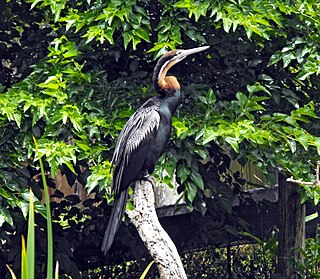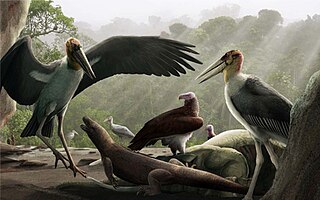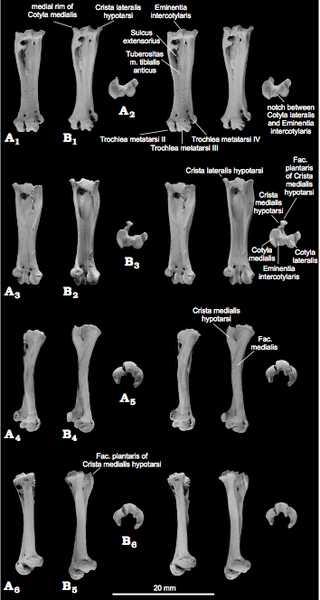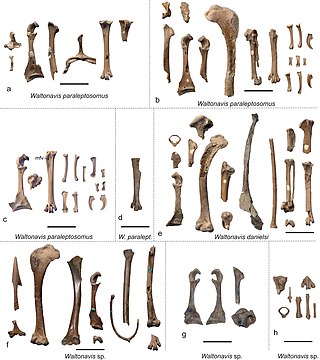
The darters, anhingas, or snakebirds are mainly tropical waterbirds in the family Anhingidae, which contains a single genus, Anhinga. There are four living species, three of which are very common and widespread while the fourth is rarer and classified as near-threatened by the IUCN. The term snakebird is usually used without any additions to signify whichever of the completely allopatric species occurs in any one region. It refers to their long thin neck, which has a snake-like appearance when they swim with their bodies submerged, or when mated pairs twist it during their bonding displays. "Darter" is used with a geographical term when referring to particular species. It alludes to their manner of procuring food, as they impale fishes with their thin, pointed beak. The American darter is more commonly known as the anhinga. It is sometimes called "water turkey" in the southern United States; though the anhinga is quite unrelated to the wild turkey, they are both large, blackish birds with long tails that are sometimes hunted for food.
The forearm is the region of the upper limb between the elbow and the wrist. The term forearm is used in anatomy to distinguish it from the arm, a word which is used to describe the entire appendage of the upper limb, but which in anatomy, technically, means only the region of the upper arm, whereas the lower "arm" is called the forearm. It is homologous to the region of the leg that lies between the knee and the ankle joints, the crus.

The St. Croix macaw or Puerto Rican macaw is an extinct species of macaw whose remains have been found on the Caribbean islands of St. Croix and Puerto Rico. It was described in 1937 based on a tibiotarsus leg bone unearthed from a kitchen midden at a pre-Columbian site on St. Croix. A second specimen consisting of various bones from a similar site on Puerto Rico was described in 2008, while a coracoid from Montserrat may belong to this or another extinct species of macaw. The St. Croix macaw is one of 13 extinct macaw species that have been proposed to have lived on the Caribbean islands. Macaws were frequently transported long distances by humans in prehistoric and historical times, so it is impossible to know whether species known only from bones or accounts were native or imported.

The Saint Helena dove is an extinct species of flightless bird in the family Columbidae. It is monotypic within the genus Dysmoropelia. It was endemic to the island of Saint Helena in the South Atlantic Ocean. It is known from remains of Late Pleistocene age found at the Sugarloaf Hill locality, which consists of aeolian calcareous sands. The holotype consists of a right coracoid, with paratypes consisting of "distal end of right tarsometatarsus, (S/1963.25.29) distal half of right humerus, (S/1963.25.26) worn left tibiotarsus lacking distal end, distal portion of shaft of left tarsometatarsus, (S/1963.25.30) worn proximal end of right humerus. left ulna, proximal fragments of left ulnae, (175959) proximal end of right femur, (175962) distal end of right humerus"
Gurilynia is a genus of enantiornithine birds. One species is known, G. nessovi. It lived during the Maastrichtian stage of the Late Cretaceous period, between 70 and 66 mya. Gurilynia is known from fragmentary fossils found at the Gurilyn Tsav locality of the Nemegt Formation in south Gobi, Mongolia.

Palaeoglaux is a genus of fossil owls from the Eocene epoch. The two known species are P. perrierensis from the Upper Eocene of Quercy, France, and P. artophoron from the Middle Eocene Messel shales, Germany. The holotype of P. perrierensis is a partial left coracoid in the Collection Université Montpellier, accession number PRR 2585. The four paratypes are the distal part of a left humerus (PRR2591), the proximal part of a left ulna, the distal part of a left ulna, and the distal part of a right tarsometatarsus. The type specimen of P. artophoron is a fossil slab and counterslab containing most of the postcranial skeleton and some feather impressions. This specimen is in the collection of the Forschunginstitut Senckenberg, accession number SMF-ME 1144 A and B.

Leptoptilos robustus is an extinct species of large-bodied stork belonging to the genus Leptoptilos that lived on the island of Flores in Indonesia during the Pleistocene epoch. It stood at about 1.8 metres (5.9 ft) tall and weighed up to an estimated 16 kilograms (35 lb). The majority of the discoveries are concentrated in Liang Bua cave located slightly north of Ruteng in the East Nusa Tenggara province.

Kurochkin's pygmy owl is an extinct species of pygmy owl that existed in what is now California, U.S. during the Late Pleistocene Epoch.

The Trias greenfinch is an extinct passerine from the family of finches (Fringillidae). The fossil remains were unearthed in the Cuevas de los Murciélagos near San Andrés y Sauces in the north of La Palma, Canary Islands. The species epithet commemorates Spanish palaeontologist Miquel Trías who collected the holotype together with Josep Antoni Alcover in July 1985.
Australornis is a genus of extinct seabird discovered in New Zealand. It lived in the Paleocene epoch, 60.5 to 61.6 million years ago (Ma). The type species name originates from australis, Latin for "southern", and ornis, the Greek word for "bird", and lovei commemorates Leigh Love, an amateur paleontologist who discovered it.

Zhongjianosaurus is a genus of dromaeosaurid belonging to the Microraptoria. Believed to hail from the Yixian Formation, specifically the middle of the Jehol Biota, it is the smallest known microraptorine thus far discovered and one of the smallest non-avian theropod dinosaurs.

Spheniscus muizoni is an extinct species of banded penguins that lived during the early Late Miocene in what is now Peru, South America. The species, the earliest member of the extant genus, was described in 2007 by Ursula B. Göhlich based on fossils found in the fossiliferous Pisco Formation of the Pisco Basin, southwestern Peru.

Imperobator is a genus of paravian theropod, a group of large, three-toed carnivorous dinosaurs, that lived during the Maastrichtian age of the Late Cretaceous period in what is now James Ross Island in Antarctica. Imperobator is one of only two non-avian theropods known from Antarctica, crossing over to the landmass when it was part of Gondwana. The only described specimen was found in 2003 by an expedition launched by the University of California Museum of Paleontology and initially described as a dromaeosaur in 2007. However, later searches reported more fossils from the site including teeth and skull bones. The fossils were formally described as a new genus of giant paravian in 2019.
Kupoupou is an extinct genus of bird from the Paleocene-aged Takatika Grit of the Chatham Islands, New Zealand which is believed to be the oldest penguin genus known to date. The type species, K. stilwelli, was named and described by Blokland et al. in 2019.
Annakacygna is a genus of flightless marine swan from the Miocene of Japan. Named in 2022, Annakacygna displays a series of unique adaptations setting it apart from any other known swan, including a filter feeding lifestyle, a highly mobile tail and wings that likely formed a cradle for their hatchlings in a fashion similar to modern mute swans. Additionally, it may have used both wings and tail as a form of display. All of these traits combined have led the researchers working on it to dub it "the ultimate bird". Two species are known, A. hajimei, which was approximately the size of a black swan, and A. yoshiiensis which exceeded the mute swan in both size and weight. The describing authors proposed the vernacular name Annaka short-winged swan for the genus.
Agnopterus is an extinct genus of stem-flamingo phoenicopteriform with fossil material from France, as well as possibly England, Kazakhstan, and Brazil. The holotype specimen for type species A. laurillardi is an incomplete distal tibiotarsus from Late Eocene gypsum from Paris; a coracoid, humeri, a scapula and perhaps a proximal femur have been recovered from Late Eocene to Early Oligocene of England to a possible second species, A. hantoniensis. Two additional species from the Late Oligocene-Early Miocene have been named as well. A. turgaiensis of Kazakhstan and A. sicki of Brazil. While all four species are considered to be close to the ancestry of flamingos, their exact relationships and placement as members of Agnopterus is uncertain.
Pliolymbus is a fossil genus of grebe known from the Late Pliocene to Early Pleistocene of United States and Mexico. It is known from a single species, P. baryosteus.
Aechmophorus elasson is an extinct species of grebe recovered from the Piacenzian age of the United States.

Waltonavis is an extinct genus of potentially leptosomiform bird from the Early Eocene London Clay Formation of Essex, United Kingdom. The genus contains two species: W. paraleptosomus and W. danielsi, both known from partial skeletons.

Psittacomimus is an extinct genus of psittacopedid bird from the Early Eocene London Clay Formation of Essex, United Kingdom. The genus contains a single species, P. eos, known from a partial skeleton.





















